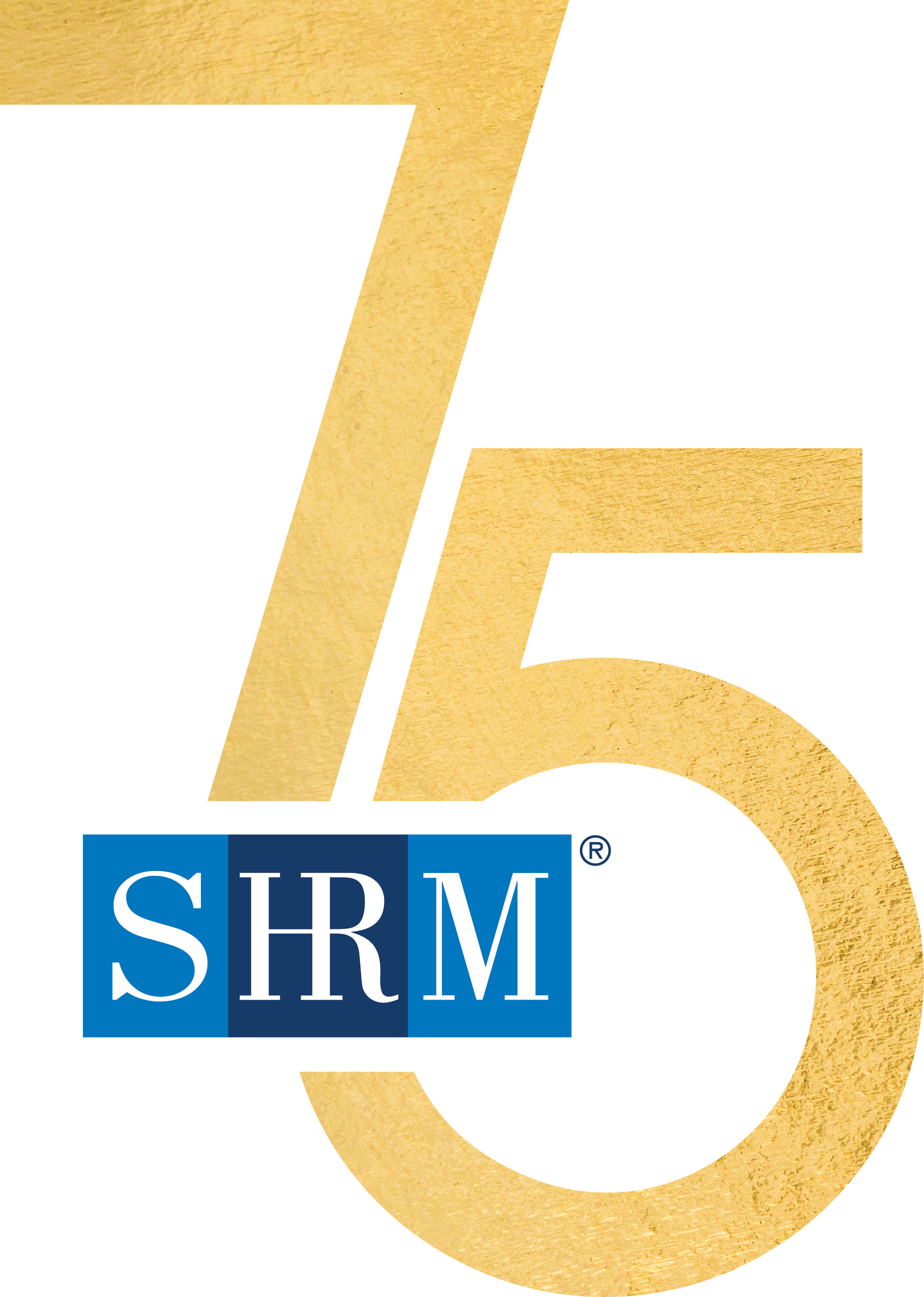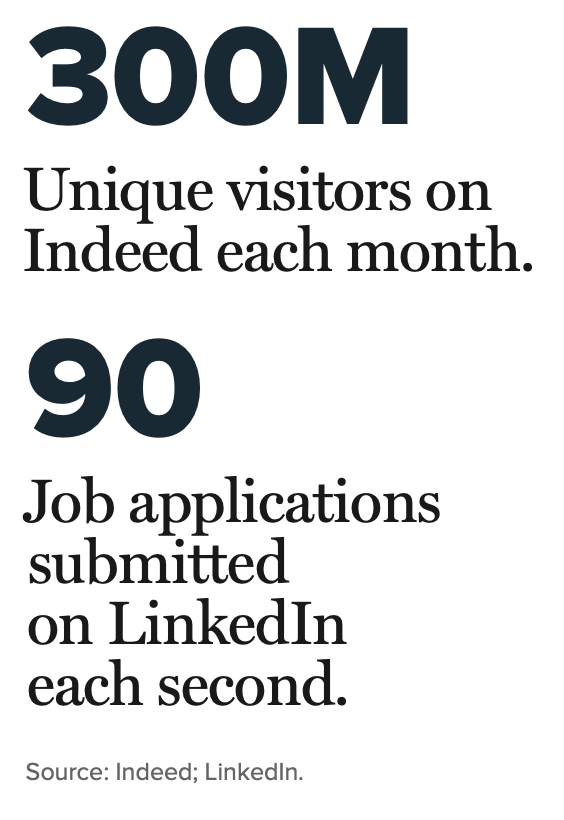

?Technology has been the main catalyst of change for the recruiting profession in recent decades, elevating talent acquisition practitioners from transactional order fillers to strategic business partners. And while talent shortages have come and gone through the years, demographic shifts have led to increasingly difficult recruiting challenges.
To be sure, talent acquisition is very different today compared to its modern beginnings in the 1940s. In an era formed by the disruptions of a population mobilized for war and postwar re-integration, recognizable concepts such as staffing firms, job ads and candidate resumes began to take shape.
For decades, recruiting was a manual, analog process where job hunters inquired about opportunities in person, by mail or by phone and employers tracked and managed paper applications and resumes.
The 1980s hinted at the promise of new technologies on the horizon, but recruiting was still largely paper-based when Marie Artim started her 30-year career at rental car company Enterprise in 1992. In her earliest days as a recruiter, she placed job ads in the Sunday newspaper and blocked off time on Monday to receive phone calls from interested candidates.
“The only time they could apply was when they came in and got a paper application,” says Artim, now vice president of talent acquisition at the Clayton, Mo.-based company and responsible for almost 200 recruiters. Her “applicant tracking system” was a filing cabinet, and she visited college campuses with a large binder of advertising materials to entice prospective candidates.
Job Listings Go Online
The commercialization of the Internet and the emergence of online jobs boards in the 1990s blew the lid off the constraints of the profession. MonsterBoard—later Monster—was one of the first public job search websites and public resume databases available.
“Monster made the biggest impact as a technology early on,” Artim says, but adoption was slow because the process was cumbersome at first. “They had to fax us the resumes they got, because we had no way to access that information,” she says. “It was somewhat tedious, but it did allow us to see more people for the first time.”

‘There’s more of a focus on workforce planning and talent forecasting.’
MARIE ARTIM
As the Internet became more accessible, employers expanded their reach tremendously, allowing candidates to be exposed to more job postings. Hundreds of jobs boards relating to every conceivable niche came online by the end of the decade, precipitating the slow demise of newspaper classified job advertising.
First-generation applicant tracking systems were introduced to help manage the increased flow of online applicants—recruiters had to be convinced to stop printing out applications and use the new system—and search engines such as Yahoo and Google debuted. Eventually, Google figured out that it could monetize searches through the placement of ads paid through a cost-per-click model, an idea that led to the creation of a significantly improved and enduring approach to job searching.
Co-founded by Paul Forster and Rony Kahan in 2004, Indeed leaned in to the power of the Internet, as opposed to just being an online version of newspaper classifieds.

“Indeed was the first search engine for job listings,” says Forster, who left the company in 2012 and continues to invest in early-stage technologies. “We followed the Google model, providing an aggregation approach and giving the job seeker a comprehensive experience with free access instantly to millions of jobs from thousands of company websites and job boards across the Web.”
Before Indeed, job seekers had to visit one careers page or jobs site after another to look for open positions.
“Only the jobs of paying clients could be found on Monster, for example. It was very limited,” Forster says.
From employers’ point of view, “you threw a job ad out there and hoped for the best,” Artim says. “After Indeed, we paid for performance. It gave us one more data layer to be more strategic in where we spent our advertising money and what we could expect in return.”
Pay-per-click advertising has since become the standard in recruitment advertising, generating an enormous amount of traffic and revenue for Indeed, the largest jobs site in the world. The site was acquired by Tokyo-based Recruit in 2012.
Recruiters seek Passive Job Seekers
Meanwhile, another platform that began as a place for professional networking would have a lasting impact on talent acquisition. The launch of LinkedIn in 2003 would structurally alter the practice of recruiting by making public people’s career history, title, and past and present employers.
“In the early 2000s, companies had to rely largely on active job seekers to find talent,” says Dan Shapero, chief operating officer at LinkedIn, which is based in Sunnyvale, Calif. “And most people with jobs were not actively job seeking. They were heads down, working. By virtue of the profiles on LinkedIn, a sea of professional talent that was historically invisible to the recruiting world became accessible.”
As the numbers of member profiles and connections between users grew, recruiters started leveraging the site to identify talent.
“We noticed the value there and, based on that feedback, decided to build a version of LinkedIn specific to what recruiters were looking for,” Shapero says.
LinkedIn Recruiter, a premium service that offers licenses to employers to view and search through all profiles on the site, was introduced in 2008. It was a game changer to be able to go after passive talent with both precision and scale.
“The job boards could be used to comb through resume databases, but LinkedIn opened the door to the truly passive—the people who weren’t even looking for a job and had not submitted their resume to a job board,” Artim says. “Like with all new technology, it took us a long time to get on board using it comfortably, but once we did, it became an integral part of what we do.”
Recruiting passive candidates has become both common and expected as recruiters strive to win over the best talent in a highly competitive hiring landscape. And the shift toward this practice aligns with overall job seeker behavior.
“Previously, people were typically looking for work if they were out of work or unhappy with their job,” Shapero says. “Now, there is an ‘always on’ perspective. People are always interested in an opportunity, even if they’re happy in their role, and if they’re informed about an exciting opportunity, they will engage.”
Recruiters’ Role Recognized
Job seekers have also become much more informed about potential employers, roles and compensation due to the introduction of employer review sites such as Glassdoor, founded in 2007.
“It’s a much more transparent process than it was 30 years ago,” Artim says. “Job seekers act like consumers, and they look to peer-generated content, social media and third-party review sites. But what’s important to candidates when I started is still important today: opportunity to grow and job stability.”
Today’s youngest workers are interested in joining employers that offer flexibility, personal and career development, and purpose-based work.
“People realize that their work is tied to how they express themselves as a human being, so they want to work at a company that they feel good about,” Shapero says. “A couple of exciting trends to follow include the shift toward skills-based hiring and internal mobility.”

‘Previously, people were typically looking for work if they were out of work or unhappy with their job. Now, there is an “always on” perspective.’
DAN SHAPERO
And recruiters? Yes, since Artim first started in the talent industry, recruiting has moved beyond its narrow focus on just filling an opening, she says.
“There has been more recognition from the business of what we do,” she explains. “In a lot of organizations, business leaders are looking to talent acquisition as a strategic partner. There’s more of a focus on workforce planning and talent forecasting. A lot of that is understanding and working with data and being able to deliver insights in a way that operational leaders can connect with.”
There’s little doubt that talent acquisition will continue to evolve to meet the dynamic needs of the labor market, and technology will most likely provide solutions to help optimize that process. The profession has become more complex and data-driven and has expanded to include multiple specialties, such as workforce planning, employment branding and marketing, diversity and inclusion, onboarding, talent analytics, and retention. Efficiency and effectiveness remain critical, and an explosion of new automation tools built with artificial intelligence and machine learning are being developed to help recruiters identify, attract and evaluate the right people for the right jobs at the right time.
“There’s so much more to this profession than I ever thought,” Artim says. “It’s been such a rewarding career, and I continue to learn and grow. To me, the biggest reward is that you feel the satisfaction of seeing what you do and the impact it has. There are people I hired 25 years ago who are now running parts of the business. It’s very fulfilling to know that you played a pivotal role in a person’s career and life journey.”
Roy Maurer is an online writer/editor for SHRM who focuses on talent acquisition and labor markets.
Illustration by Valerie Chiang.

